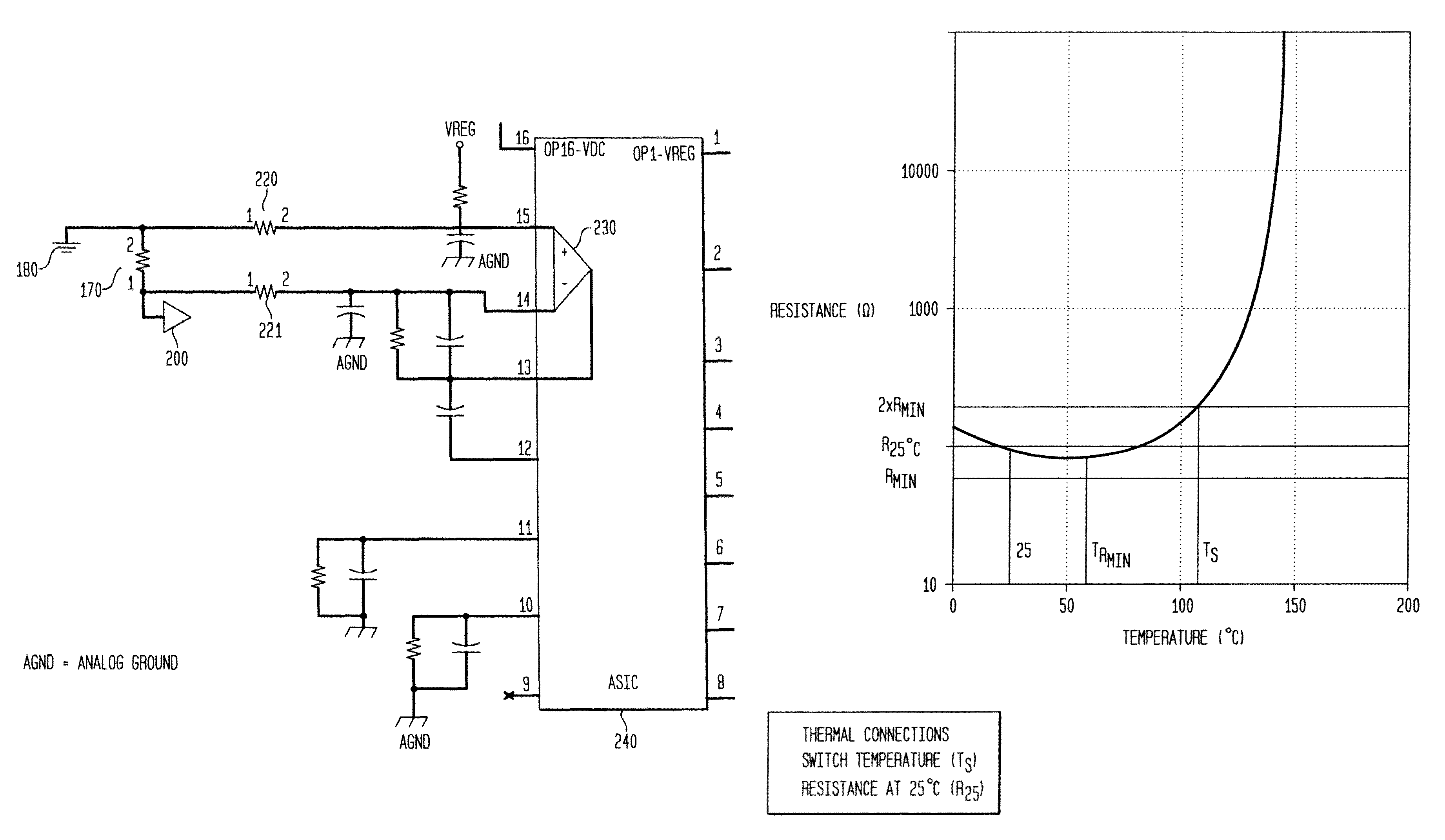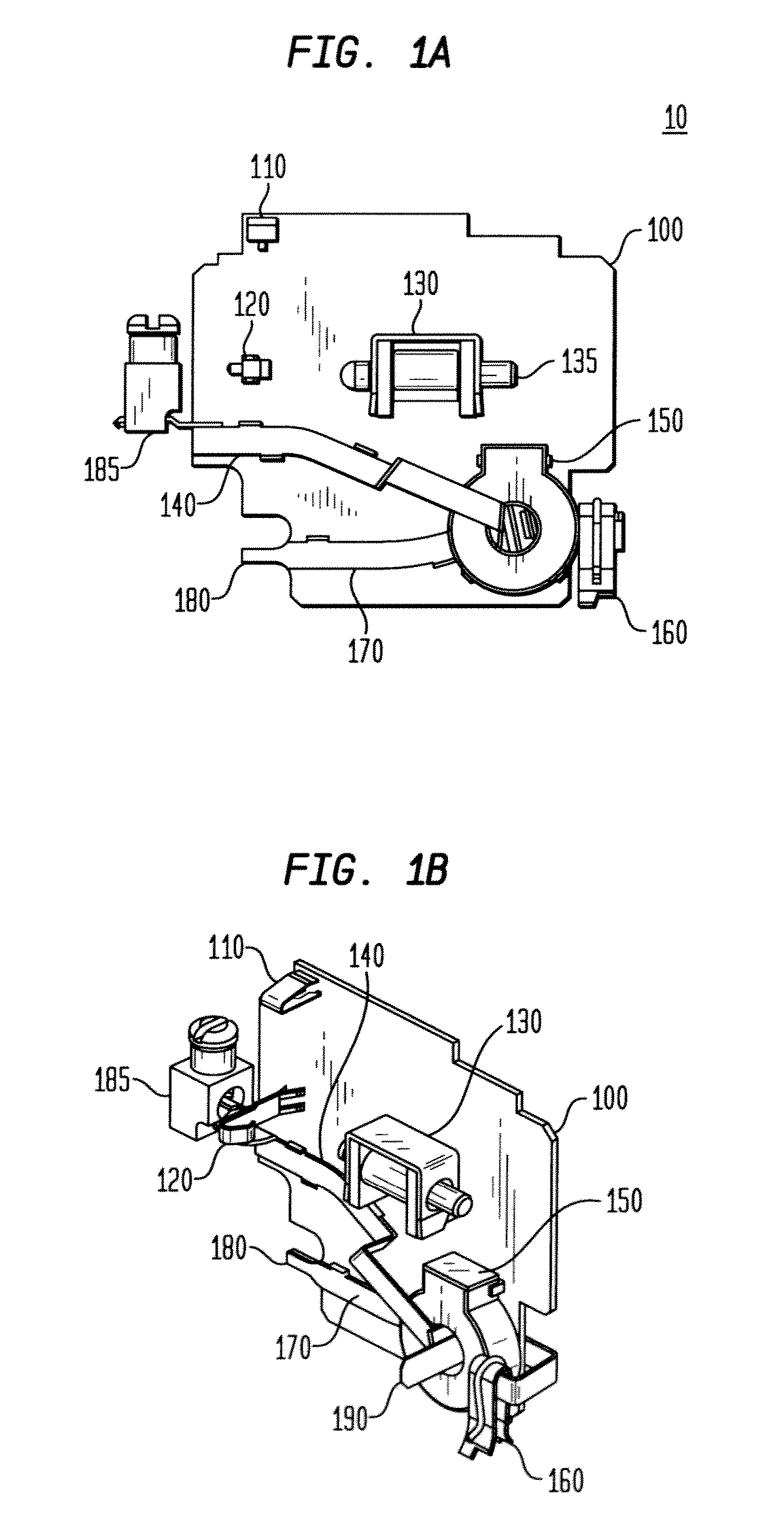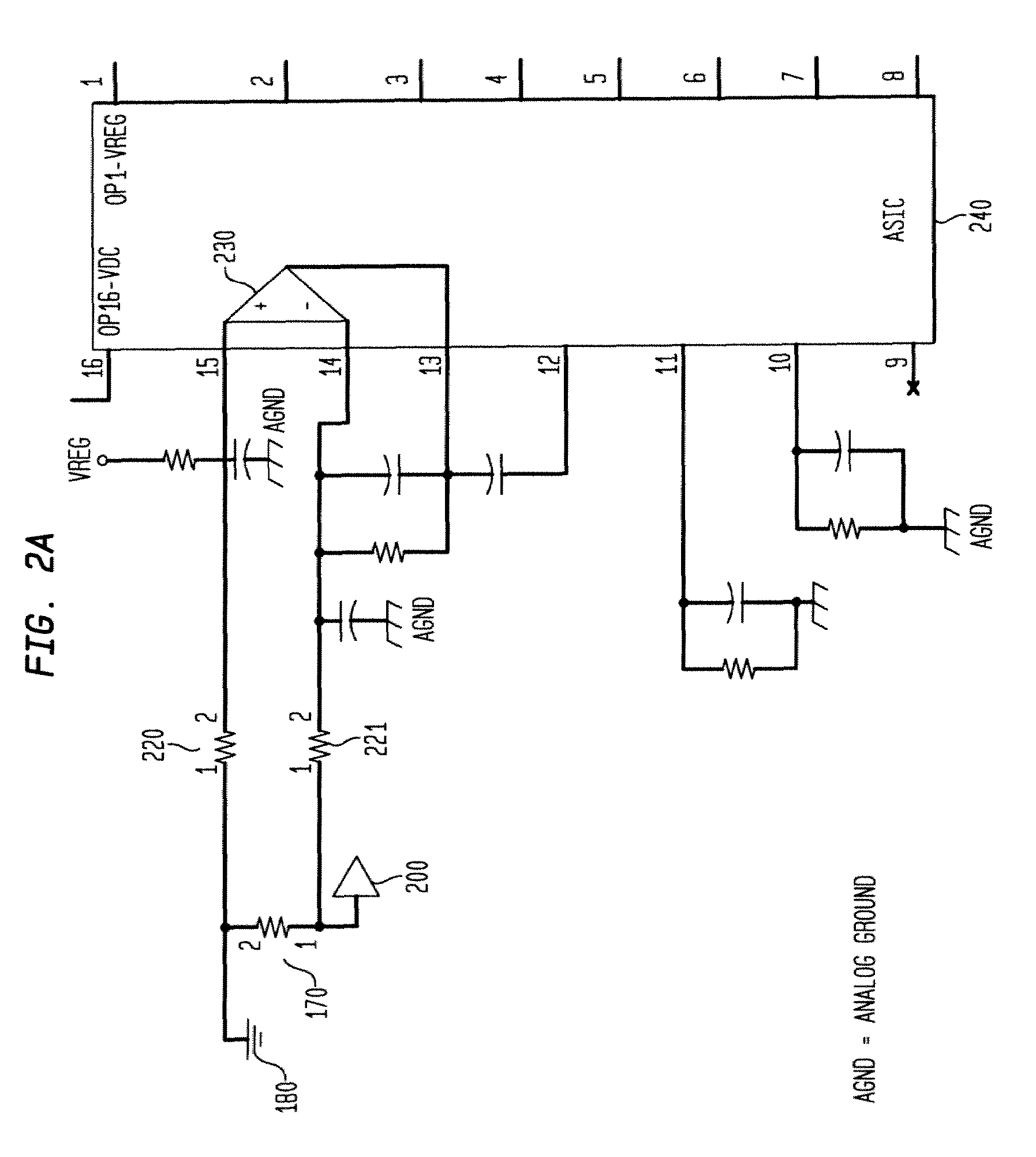AFCI temperature compensated current sensor
a current sensor and temperature compensation technology, applied in the direction of emergency protective circuit arrangement, emergency protection circuit arrangement, etc., can solve the problem of providing no galvanic isolation, arcing fault condition to be undetected by a circuit breaker, and undetected arcing fault condition
- Summary
- Abstract
- Description
- Claims
- Application Information
AI Technical Summary
Benefits of technology
Problems solved by technology
Method used
Image
Examples
Embodiment Construction
[0019]FIG. 1a) refers to the components incorporated in a powered circuit 10 comprising a printed circuit board 100 comprising push to test switches 110, power clip 120, solenoid 130, part of neutral trace 140, differential sensor 150, line terminal 160, sense resistor 170, neutral pigtail 180, neutral lug 185, and contact 190. Power clip 120 connects printed circuit board 100 to a voltage source.
[0020]Current is sensed when a proportional voltage signal is generated by the passage of current through the sense resistor 170. By switching on a load, a current is first sent through the partial of neutral trace 140 to the differential sensor 150. The differential sensor 150 is used to detect hot to neutral situational arcs to safeguard ground wire devices. Solenoid 130 comprises a plunger 135 that extends upon reaction and detection of a hot to neutral situational arc by differential sensor 150. From the differential sensor 150, the current flows to the sense resistor 170 and then out t...
PUM
 Login to View More
Login to View More Abstract
Description
Claims
Application Information
 Login to View More
Login to View More - R&D
- Intellectual Property
- Life Sciences
- Materials
- Tech Scout
- Unparalleled Data Quality
- Higher Quality Content
- 60% Fewer Hallucinations
Browse by: Latest US Patents, China's latest patents, Technical Efficacy Thesaurus, Application Domain, Technology Topic, Popular Technical Reports.
© 2025 PatSnap. All rights reserved.Legal|Privacy policy|Modern Slavery Act Transparency Statement|Sitemap|About US| Contact US: help@patsnap.com



